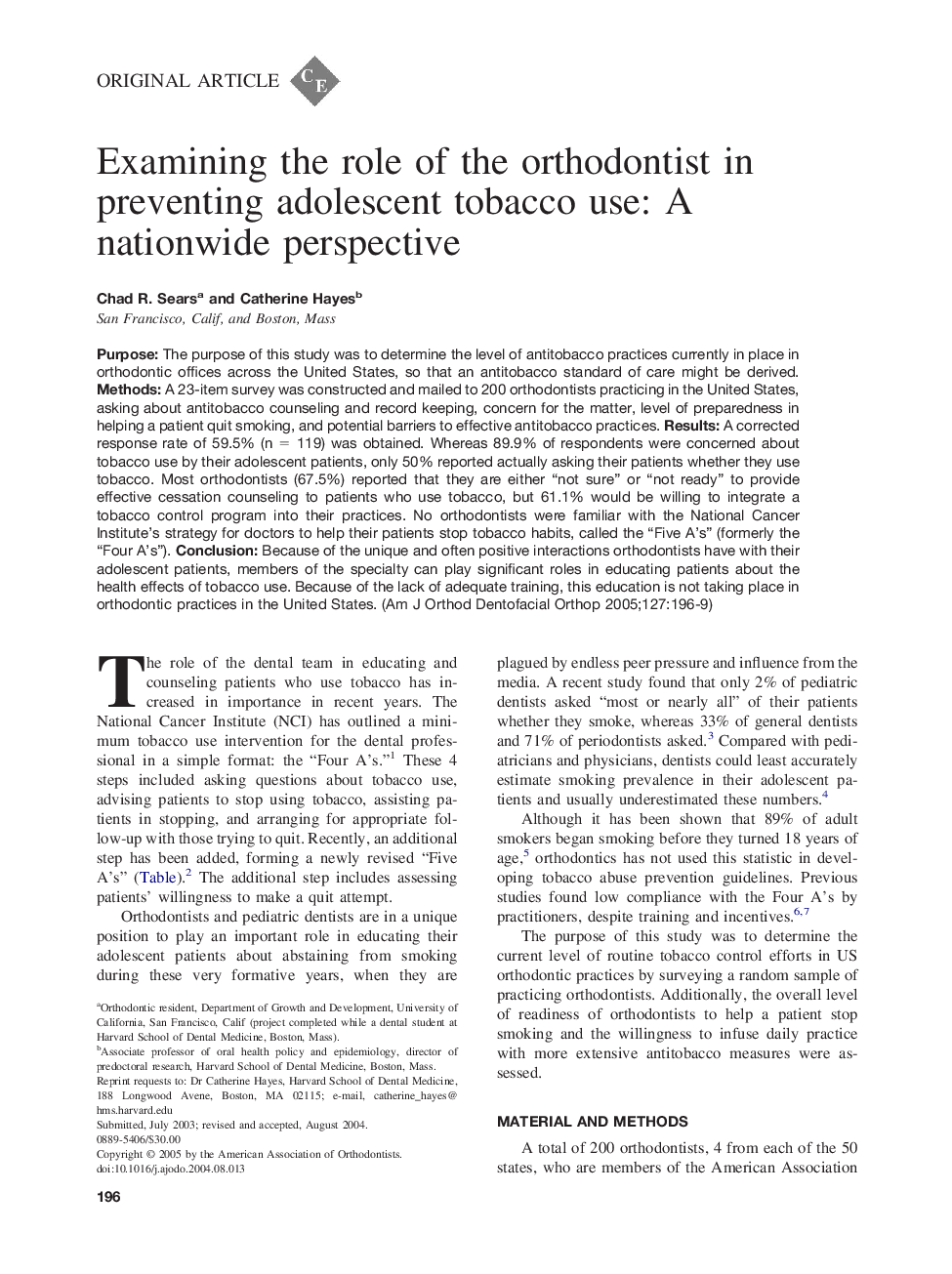| Article ID | Journal | Published Year | Pages | File Type |
|---|---|---|---|---|
| 9993095 | American Journal of Orthodontics and Dentofacial Orthopedics | 2005 | 4 Pages |
Abstract
Purpose: The purpose of this study was to determine the level of antitobacco practices currently in place in orthodontic offices across the United States, so that an antitobacco standard of care might be derived. Methods: A 23-item survey was constructed and mailed to 200 orthodontists practicing in the United States, asking about antitobacco counseling and record keeping, concern for the matter, level of preparedness in helping a patient quit smoking, and potential barriers to effective antitobacco practices. Results: A corrected response rate of 59.5% (n = 119) was obtained. Whereas 89.9% of respondents were concerned about tobacco use by their adolescent patients, only 50% reported actually asking their patients whether they use tobacco. Most orthodontists (67.5%) reported that they are either “not sure” or “not ready” to provide effective cessation counseling to patients who use tobacco, but 61.1% would be willing to integrate a tobacco control program into their practices. No orthodontists were familiar with the National Cancer Institute's strategy for doctors to help their patients stop tobacco habits, called the “Five A's” (formerly the “Four A's”). Conclusion: Because of the unique and often positive interactions orthodontists have with their adolescent patients, members of the specialty can play significant roles in educating patients about the health effects of tobacco use. Because of the lack of adequate training, this education is not taking place in orthodontic practices in the United States.
Related Topics
Health Sciences
Medicine and Dentistry
Dentistry, Oral Surgery and Medicine
Authors
Chad R. Sears, Catherine Hayes,
